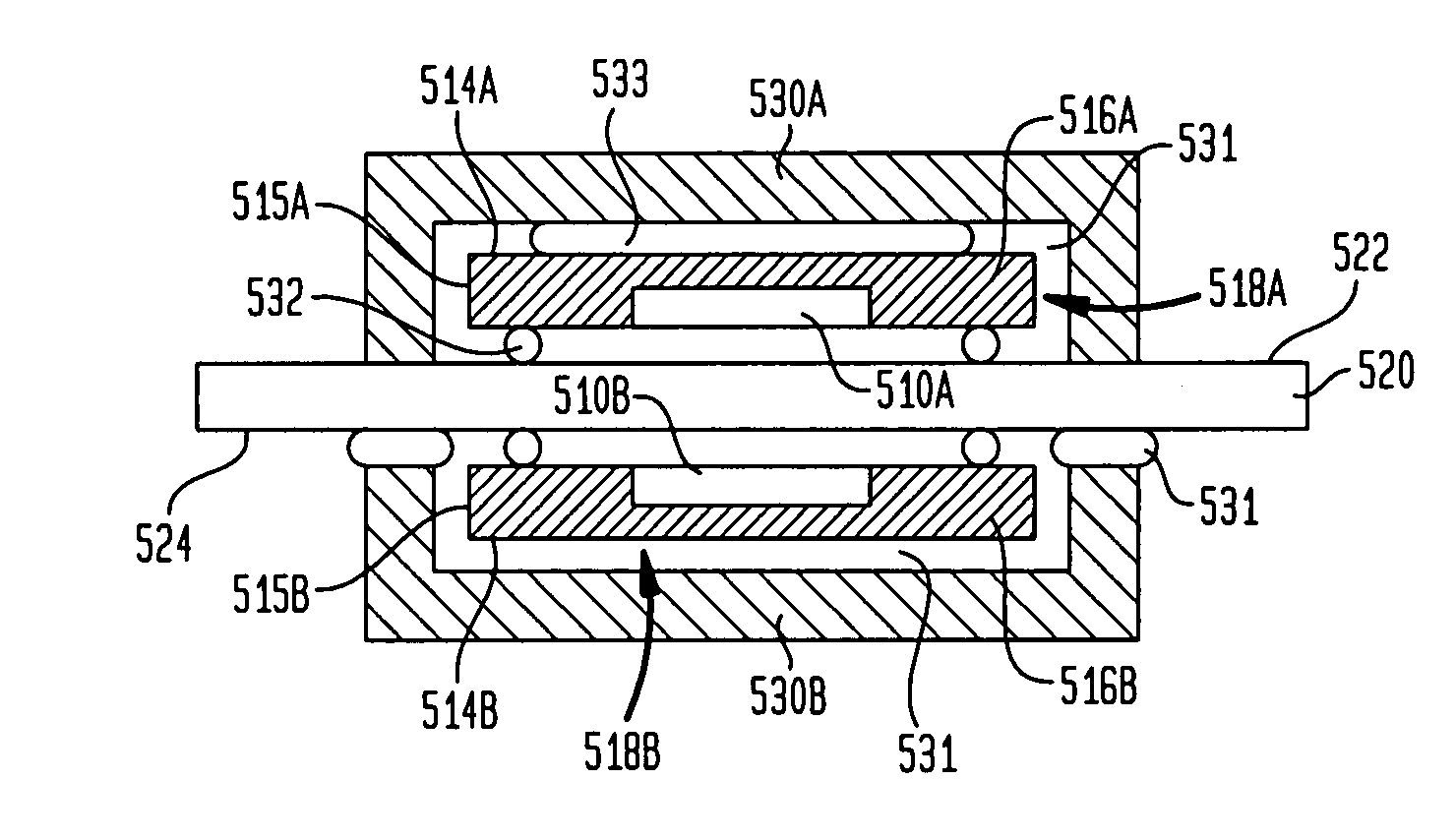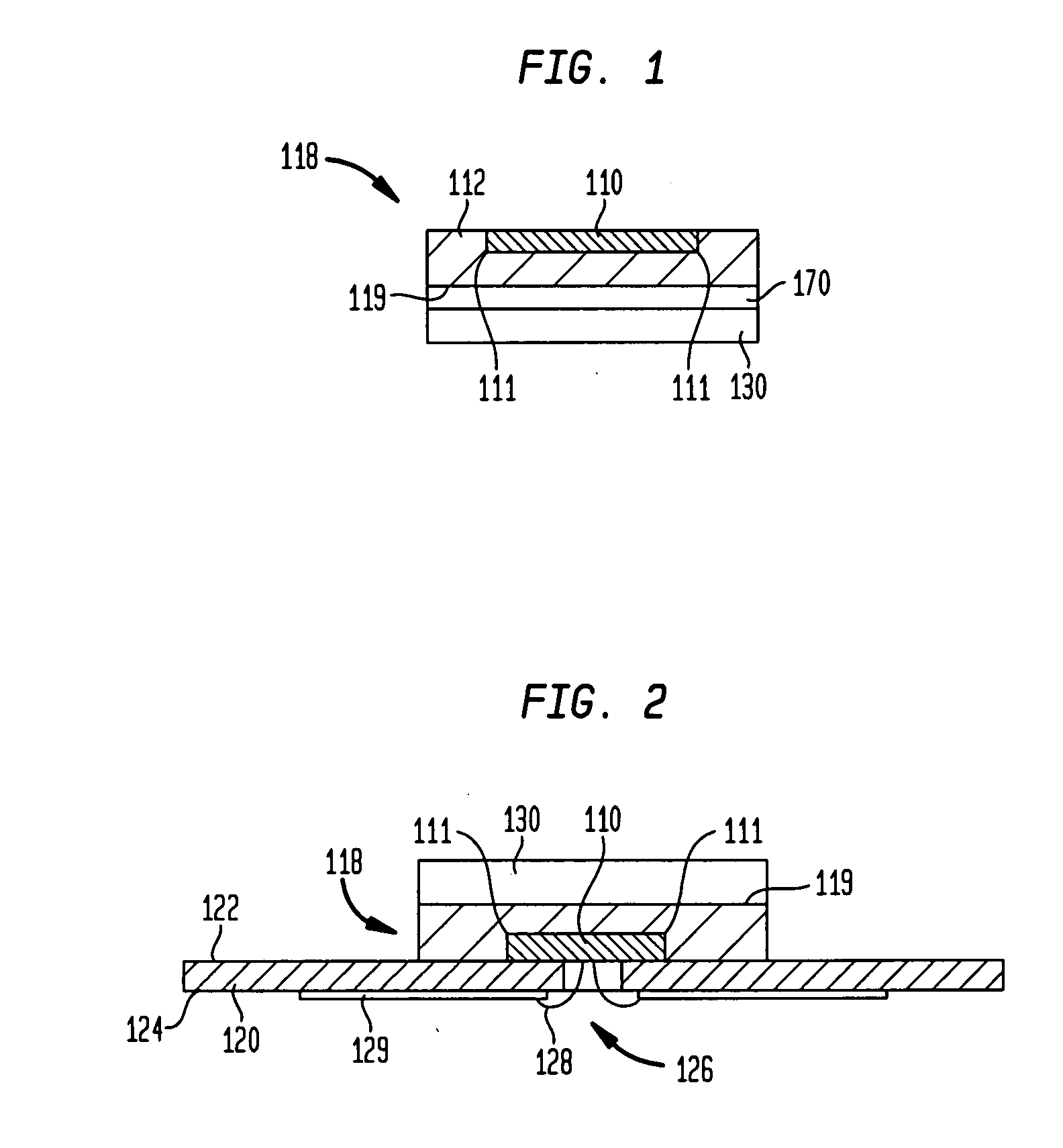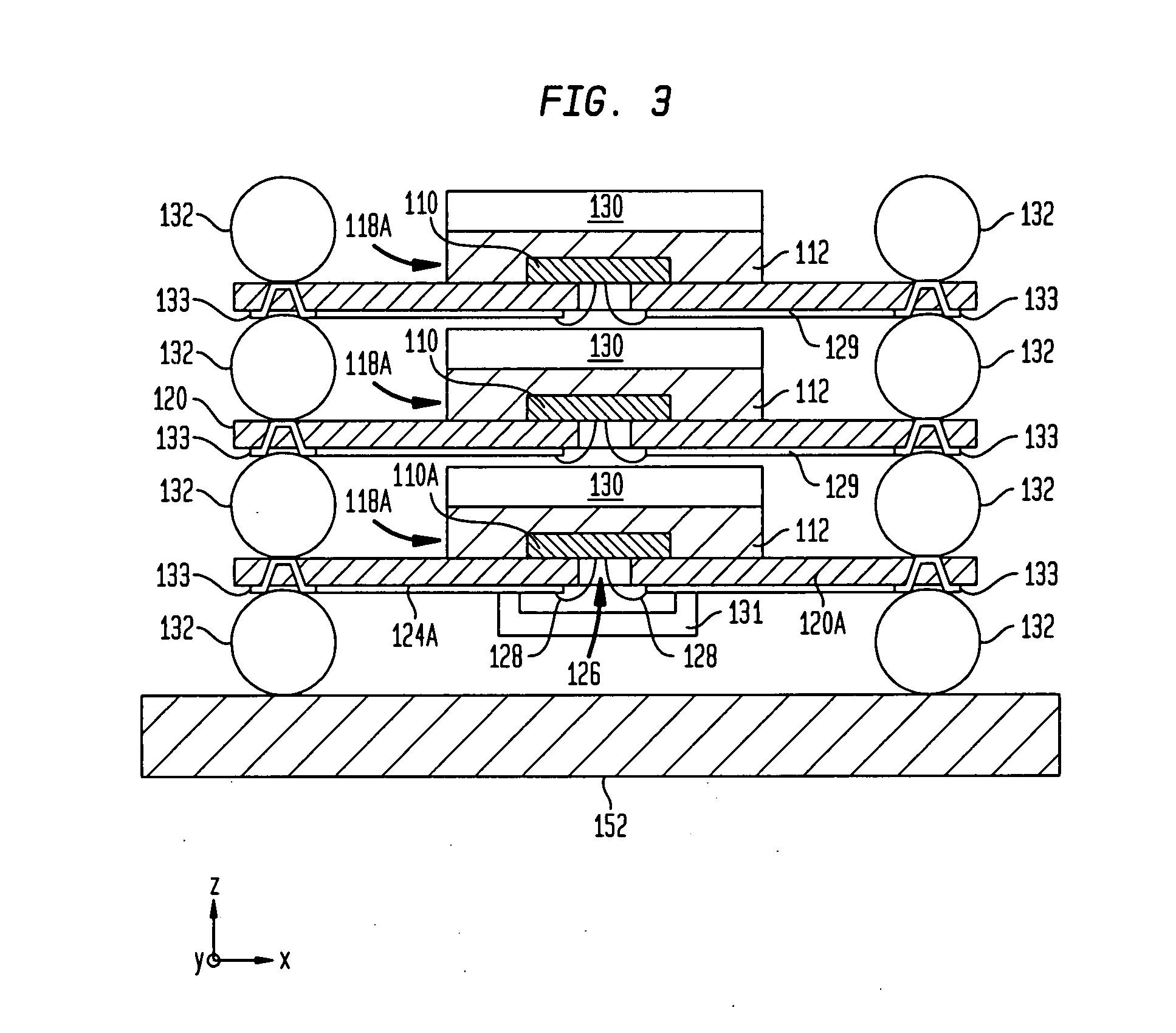Collective and synergistic MRAM shields
a technology of mram shields and shields, applied in the field of collective and synergistic mram shields, can solve the problems of data stored therein being susceptible to being corrupted or destroyed, and corrupting the memory therein,
- Summary
- Abstract
- Description
- Claims
- Application Information
AI Technical Summary
Benefits of technology
Problems solved by technology
Method used
Image
Examples
Embodiment Construction
[0032]Referring now to the drawings, wherein like reference numerals indicate like elements, FIG. 1 shows an MRAM die 118 including MRAM circuitry 110 within dielectric 112. As shown in FIG. 2, MRAM die 118 may be mounted to a substrate 120 which made from a dielectric material and is generally planar having a first surface 122 and a second, opposite surface 124. MRAM die 118 can be mounted to substrate 120 using known methods for flip-chip bonding such that die 118, particularly MRAM circuitry 110 within die 118 is electronically interconnected with conductive elements 129 exposed at a surface of substrate 120. In the embodiment shown in FIGS. 2 and 3, hole 126 is formed within substrate 120 through which wires 128 pass. Wires 128 interconnect MRAM circuitry 110 with the conductive elements 129 of substrate 120.
[0033]Generally, materials having one of two different properties are useful to divert magnetic fields. One such material is ferromagnetic, the other being diamagnetic. Whil...
PUM
 Login to View More
Login to View More Abstract
Description
Claims
Application Information
 Login to View More
Login to View More - R&D
- Intellectual Property
- Life Sciences
- Materials
- Tech Scout
- Unparalleled Data Quality
- Higher Quality Content
- 60% Fewer Hallucinations
Browse by: Latest US Patents, China's latest patents, Technical Efficacy Thesaurus, Application Domain, Technology Topic, Popular Technical Reports.
© 2025 PatSnap. All rights reserved.Legal|Privacy policy|Modern Slavery Act Transparency Statement|Sitemap|About US| Contact US: help@patsnap.com



